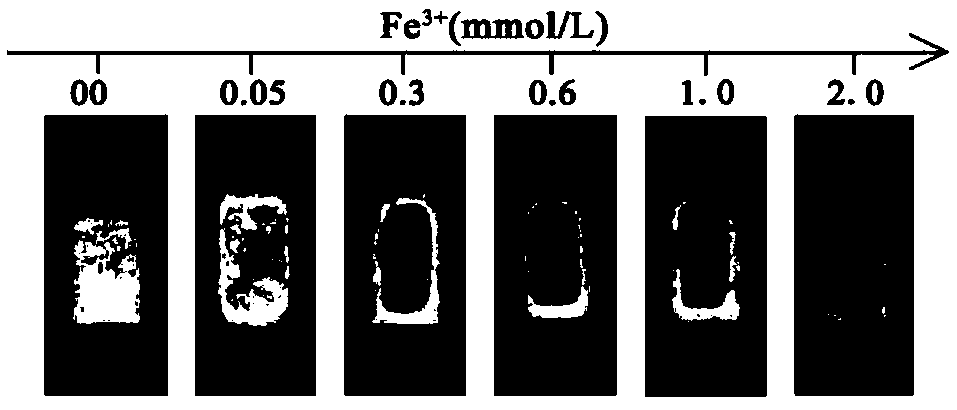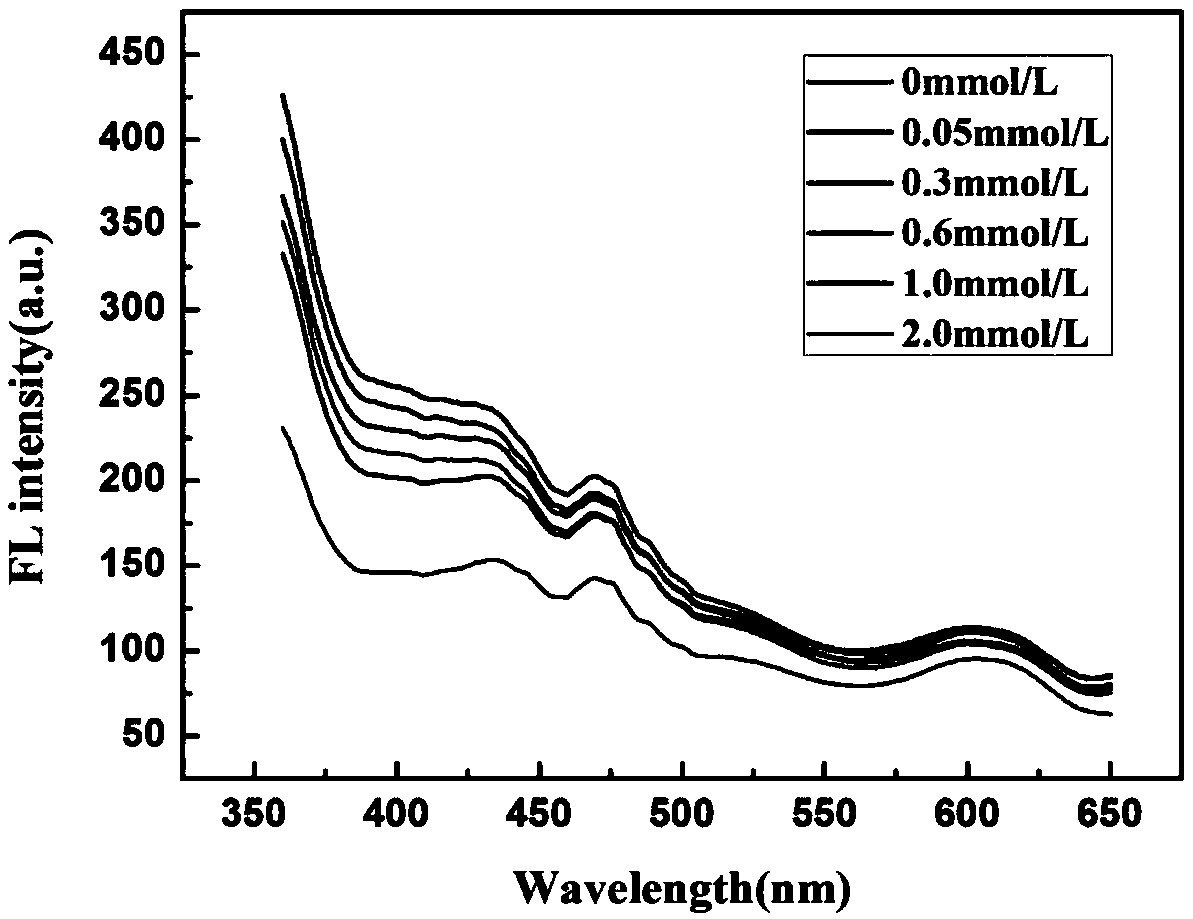Fluorescent paper based sensor for visually detecting Fe<3+> and preparation method thereof
A sensor, paper-based technology, used in fluorescence/phosphorescence, instruments, measuring devices, etc., can solve the problem of poor uniformity of coating methods, detection probes that are easily washed or dissolved by water or organic solvents, affecting detection accuracy, etc. problem, to achieve the effect of stable color rendering, good water solubility and good selectivity
- Summary
- Abstract
- Description
- Claims
- Application Information
AI Technical Summary
Problems solved by technology
Method used
Image
Examples
Embodiment 1
[0030] (1) Weigh 100mg of citric acid, put it into a small beaker, inject deionized water to obtain 50ml of citric acid solution with a concentration of 2mg / ml; after the citric acid solution is fully dissolved, transfer it to a 100ml polytetrafluoroethylene liner, and add 2ml of ammonia water, cover the lid as soon as possible, put the liner into the reaction kettle and tighten it; set the temperature of the vacuum drying oven to 200°C, and the time is 180min, put the reaction kettle into the reaction; Dialyze in deionized water until the internal and external fluid system of the dialysis bag (3000Da) is stable, and the pH value measured by a pH meter is neutral; collect the light yellow N-GQDs probe solution and store it away from light.
[0031] (2) Preparation of fluorescent paper-based sensors by immersion method: design six rectangular detection areas with a size of 10 mm × 5 mm, and use a pencil to draw a sketch of the detection area on the filter paper base, and use a cra...
Embodiment 2
[0038] (1) The preparation of the fluorescent paper-based sensor was as in the steps (1) and (2) of Example 1.
[0039] (2) Prepare standard stock solutions of other common coexisting metal ions respectively.
[0040] (3) Take an appropriate volume of other ion standard solutions in step (2) and dilute to an appropriate multiple with deionized water to obtain other ion solutions with a concentration of 2000 μmol / L.
[0041] (4) Drop other ions in step (3) onto the prepared fluorescent paper-based sensor respectively.
[0042] (5) The selectivity diagram of the fluorescent paper-based sensor prepared by soaking method to other metal ions, such as image 3 shown.
Embodiment 3
[0044] (1) The preparation of the probe solution was as in step (1) of Example 1.
[0045] (2) Fluorescent paper-based sensor prepared by inkjet method: design a detection area pattern of 10 mm × 10 mm in a word document; connect the HP inkjet printer online, inject the N-GQDs fluorescent probe solution into the cleaned ink cartridge, and use it for fluorescence Printing of the detection area; the detection area is printed on a paper medium by an inkjet printer, and the printing process is repeated 10 times to obtain the visual detection Fe 3+ Fluorescent paper-based sensors.
[0046] (3) Fe 3+ The preparation of the standard storage solution was as in step (3) of Example 1.
[0047] (4) get the Fe of appropriate volume in step (3) 3+ Standard solution, dilute appropriate times with deionized water to obtain Fe with concentrations of 50, 150, 300, 600, 1000, 2000 μmol / L 3+ .
[0048] (5) Take the above-mentioned different concentrations of Fe 3+ Ions are added dropwise t...
PUM
| Property | Measurement | Unit |
|---|---|---|
| concentration | aaaaa | aaaaa |
Abstract
Description
Claims
Application Information
 Login to View More
Login to View More - R&D
- Intellectual Property
- Life Sciences
- Materials
- Tech Scout
- Unparalleled Data Quality
- Higher Quality Content
- 60% Fewer Hallucinations
Browse by: Latest US Patents, China's latest patents, Technical Efficacy Thesaurus, Application Domain, Technology Topic, Popular Technical Reports.
© 2025 PatSnap. All rights reserved.Legal|Privacy policy|Modern Slavery Act Transparency Statement|Sitemap|About US| Contact US: help@patsnap.com



